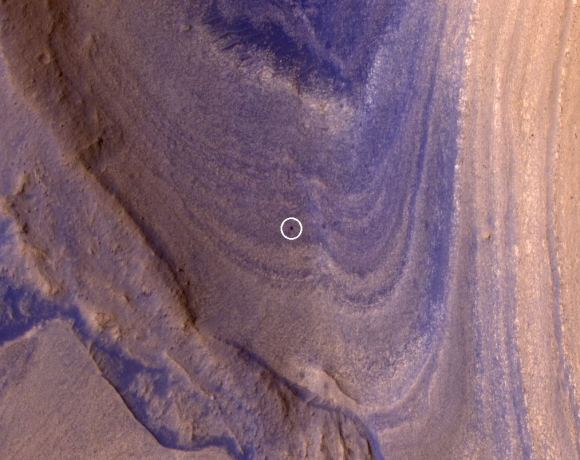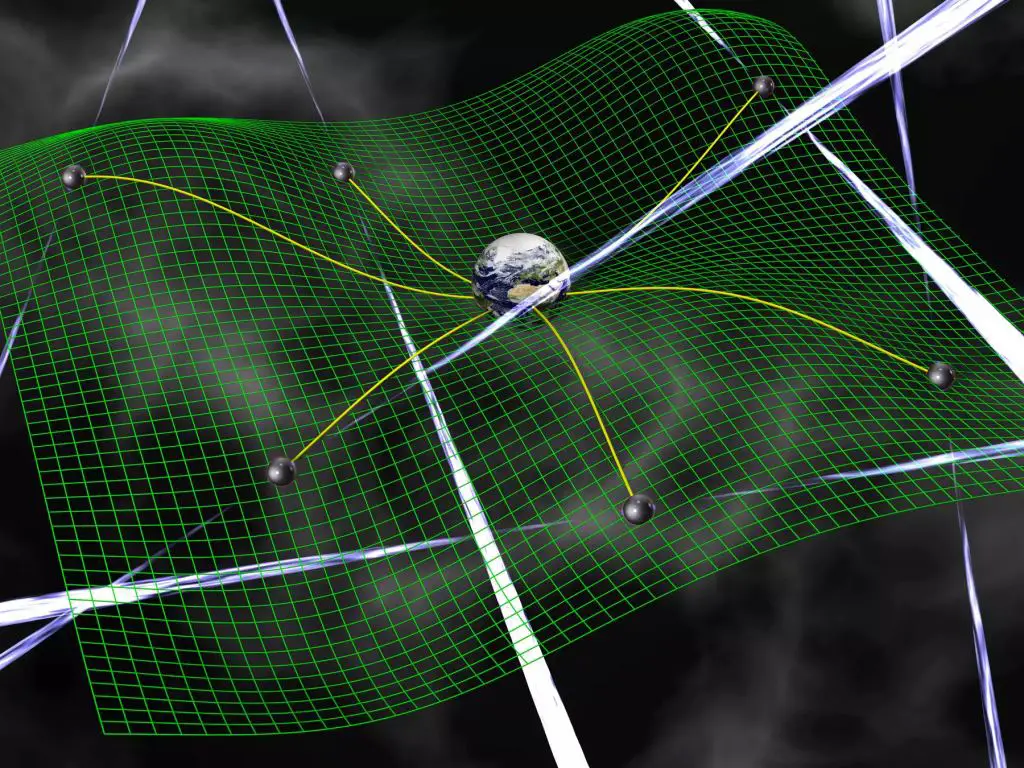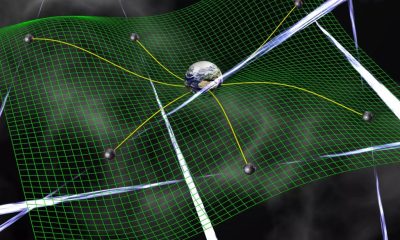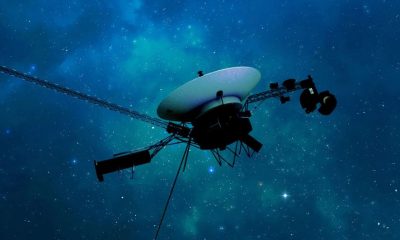News
Curiosity Rover Ascending Dramatic Striped Terrain on Mars

The Curiosity Rover is currently climbing through dramatic striped terrain on Mars, providing us with stunning images of the Red Planet’s unique landscape. Recently, the Mars Reconnaissance Orbiter (MRO) captured a captivating picture of Curiosity navigating its way up a steep ridge on Mount Sharp.
In the image sent back by MRO’s HiRISE camera, the rover appears as a tiny black dot against the backdrop of alternating dark and light bands of material on Mars. This visual gives us a sense of the rover’s size, similar to that of a dinner table, as it explores the intriguing terrain of the planet.

Where’s Curiosity?
The Curiosity rover is currently exploring an ancient ridge on the side of Mount Sharp, located in a crater on Mars. Positioned on the Gediz Vallis Ridge, Curiosity is investigating terrains that hold the remnants of ancient water flow events that occurred around three billion years ago. These events led to the deposition of rocks and debris, forming the ridge as we see it today.
Similar occurrences of debris flows are observed on Earth in the aftermath of natural disasters like floods, volcanic eruptions, and earthquakes. These events contribute to the shaping of landscapes through the movement of materials. By studying these processes on Mars, scientists aim to gain insights into the planet’s geological history and the formation of its unique features.
Understanding the Debris Ridge
Gediz Vallis itself is a significant area of interest for planetary scientists, as it offers insights into the past actions of water flow on Mars. The canyon stretches across 9 kilometers, carved by fluvial activity and later filled with various sediments carried by floods. Over time, wind erosion has exposed layers of materials left behind by these ancient floods, providing clues about past environmental conditions on Mars.
As Curiosity continues its journey up Mount Sharp, it explores progressively younger materials, uncovering the geological history of the region. The ridge and surrounding terrain hold valuable information about the sequence of events that led to its formation, offering a window into Mars’ past.

Curiosity’s Mission at Gediz
Mount Sharp, the central peak of Gale Crater on Mars, offers a glimpse into the planet’s ancient past, shaped by water and wind erosion over billions of years. Curiosity’s mission on Mars involves unraveling the mysteries of this unique landscape, studying the geological processes that have sculpted Mount Sharp and its surroundings.
By traversing the Gediz Vallis Ridge and exploring the layered sedimentary rocks of Mount Sharp, Curiosity provides valuable data that contributes to our understanding of Mars’ evolution. This ongoing mission on Mars continues to uncover new insights into the planet’s history and potential for past habitability.
For More Information
For further details on Curiosity’s exploration of Mars and the Gediz Vallis Ridge, you can visit the following links:
News
Further Support for Gravitational Wave Background in the Universe

The discovery of the gravitational wave background in 2016 marked a significant milestone in our understanding of the Universe. This groundbreaking discovery was further validated by the release of a second data set from the European Pulsar Timing Array, along with the addition of data from the Indian Pulsar Timing Array. These complementary studies have provided more evidence for the existence of the gravitational wave background, shedding light on the cosmic phenomena that shape our universe.
Gravitational waves are ripples in spacetime that are generated by violent processes such as merging black holes and colliding neutron stars. Predicted by Einstein in 1916 as part of his General Theory of Relativity, these waves have the ability to travel through space, largely unimpeded by any obstacles in their path. The first detection of gravitational waves in 2015 by the Laser Interferometer Gravitational-Wave Observatory (LIGO) confirmed their existence, originating from a gravitational merger between two black holes located 1.3 billion light years away.

The recent confirmation of the gravitational wave background by the European and Indian Pulsar Timing Arrays indicates that we are detecting a combined signal from the mergers of supermassive black holes. This random distribution of gravity waves that permeates the Universe offers a new avenue for studying the cosmos, akin to the Cosmic Background Radiation. The collaborative efforts of various observatories and research institutions have enabled us to delve deeper into the mysteries of the Universe.

Utilizing pulsar timing arrays as galaxy-sized detectors, researchers have been able to monitor and analyze the pulse arrival times of galactic pulsars on Earth. By detecting subtle patterns in these signals, they can uncover the presence of the gravitational wave background. The latest study led by J. Antoniadis from the Institute of Astrophysics in Greece delves into the implications of the low-frequency signals observed in the recent data releases from various pulsar timing array systems.
The accumulation of data from multiple sources has provided undeniable evidence for the existence of the gravitational wave background. With ongoing Pulsar Timing Array projects, the signals of the low-frequency gravity waves will become more distinct, offering a wealth of opportunities to explore the Universe in this novel way. The focus now shifts towards interpreting these signals to unlock the secrets of the cosmos.
-

 Entertainment1 week ago
Entertainment1 week agoOlivia Munn opens up about her decision to have a full hysterectomy during breast cancer fight: ‘It was the right choice for me’
-

 News1 week ago
News1 week agoUniversity of Wisconsin-Milwaukee and Protesters reach an agreement to dismantle encampment
-

 Entertainment1 day ago
Entertainment1 day agoSimone Biles Emerges Victorious over Suni Lee and Gabby Douglas at Gymnastics Classic
-

 News1 day ago
News1 day agoFacing Criticism for Shooting Dog, South Dakota Governor Noem Discusses ‘Difficult Choices’
-

 Business2 hours ago
Business2 hours agoWho are Crypto Market Makers and Market Takers?
-

 Entertainment3 hours ago
Entertainment3 hours agoCourteney Cox Reveals Late ‘Friends’ Co-Star Matthew Perry Continues to ‘Visit’ Her Even After His Passing
-

 News3 hours ago
News3 hours agoFurther Support for Gravitational Wave Background in the Universe










